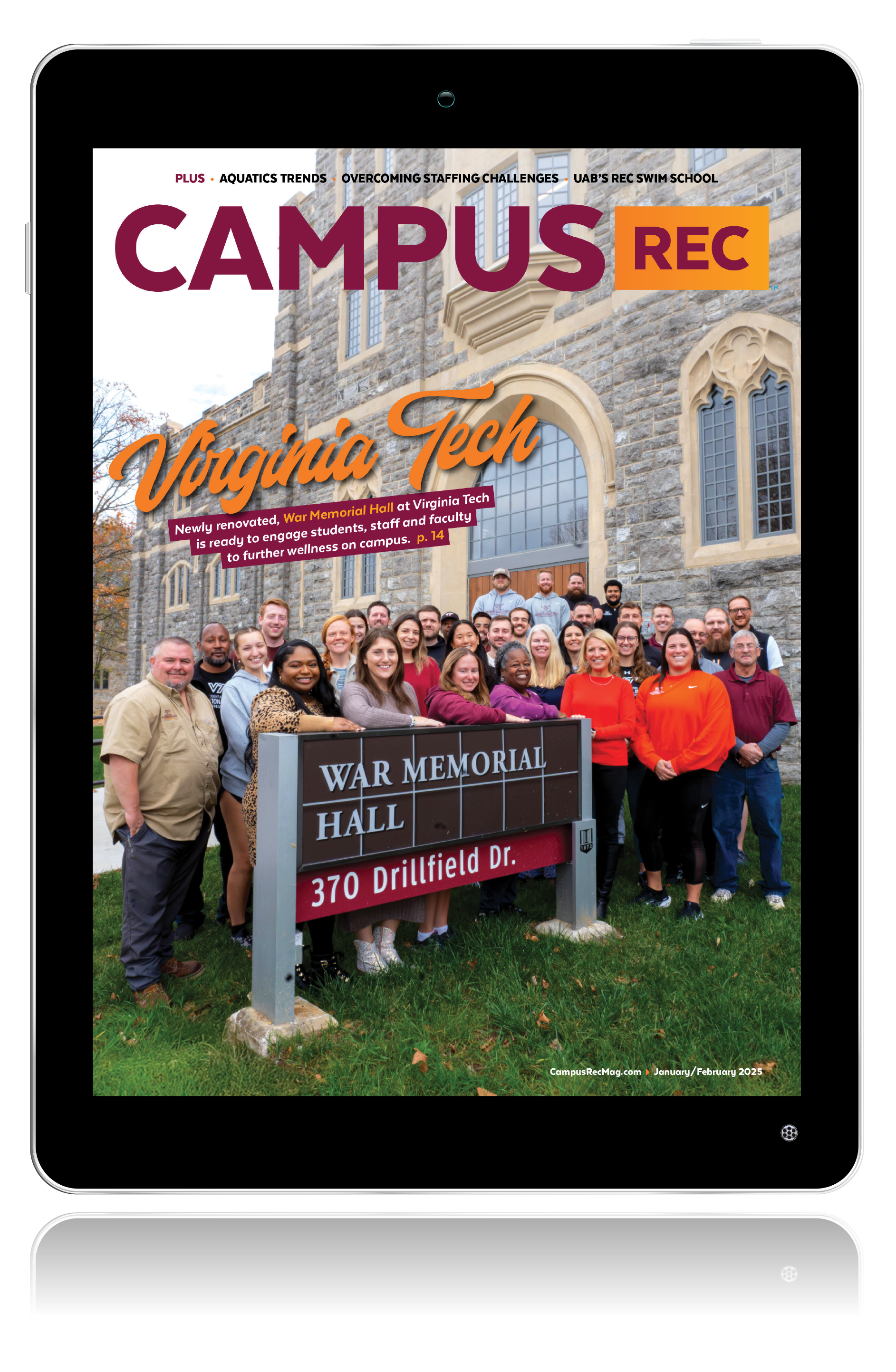Promoting group training in a campus rec setting requires a multi-faceted strategy, including advertisements through websites, social media, and campus communication outlets like a newspaper or newsletter. Not only is the type of media outlet an important key to targeting your audience, there are trends in the social atmosphere of a campus community that should be considered when creating a strategy.
Authentic Messaging and Imagery
To engage with your audience, you want to use authentic messaging and imagery in your marketing assets. Instead of conveying a societal ideal using lean fitness models, inspire confidence in a diverse group of community members, and make the argument for your inclusive program to be adopted by all by using actual students, staff and community members in your advertisements.
Once your group training program is established, consider asking participants to share their experiences. Inquire about their favorite part of the class and how they would describe it to a friend. Keep an open line of communication for willing participants to share their fitness journey and what drew them to join your group training class. Authentic stories about real results are inspiring vehicles to motivate others in the campus community. Pique the viewers’ interest by promoting results and aspirations for varying fitness levels.
Self-care and Life Balance
There has been an increased awareness of self-care and life balance permeating the pop culture atmosphere. Self-care is an ever-present conversation on college campuses as students try to balance school, work and their personal lives. Campus recreation facilities are the perfect training ground for students to learn the value of self-care, creating habits that will have a positive impact on their health and wellness for years to come.
Group training programs provide structure, community and accountability that encourages campus community members to include their active self-care habits in their daily routine. Often your group training programs are offered at certain days and times each week, allowing participants to align their schedule for better consistency. Fitness classes that offer exercise variety are an important way to provide balanced workouts, hinder boredom and keep the campus community members engaged and motivated.
Camaraderie and Motivation
Instructors connecting with participants is important; however, creating an environment where participants connect with each other can have an even larger impact. Individuals in your campus rec community are more likely to make your group training classes a part of their routine if they feel like they are working out with friends. Instructors should encourage participants to introduce themselves during warm-up and congratulate each other with high fives at the end of each training session. Individual recognition by an instructor is very motivating, especially when personally praising their effort; however, when coaching technique corrections, simply gain eye contact and provide the form cue.
A campus community often has a variety of avenues for an individual to express themselves and to be seen and heard by peers. In the group training realm, instill an “arrive early, leave late” mindset with instructors to open the floor for discussion. If an instructor is present before and after the class, participants are put at ease in a comfortable environment to connect with others, share their stories and offer feedback. This leads to a more well-rounded campus experience they have a hand in creating.
Becky Jalbert is the global product manager for Group Training at Matrix Fitness. For more information, email becky.jalbert@johnsonfit.com.










